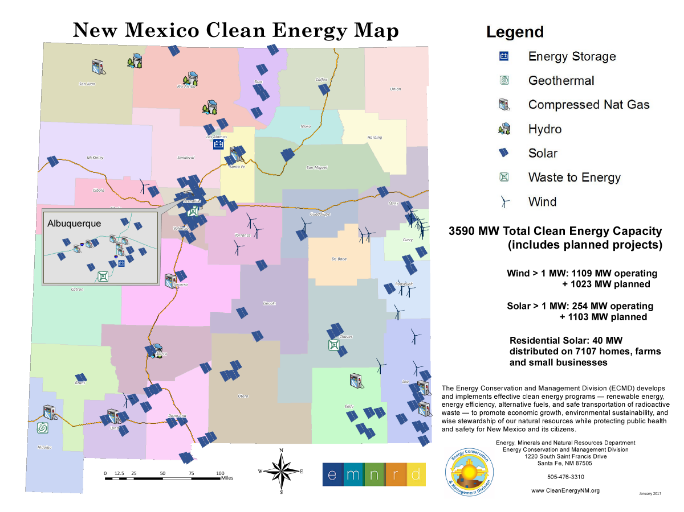Renewable Energy Overview
New Mexico’s world-class renewable resources are yielding substantial economic and environmental benefits for the state. These links provide more detailed information:
- Biomass Energy
- Geothermal Energy
- Solar Energy
- Solar Rights Act
- Wind Energy
- Energy Storage
ECAM’s renewable energy initiatives involve both “distributed-scale” and “utility-scale” technologies. Distributed energy generation, whether in the form of electricity or heat, means that the power is generated at or near where the energy is used. Solar photovoltaic (PV) modules on the roof of a home are a common type of distributed renewable energy. Other examples include solar water heating collectors that provide on-site water or space heating for a home or a business, small wind turbines that provide power to a rural farm or ranch, and even wood burning stoves for space heating. While there are exceptions, distributed energy systems are generally small-scale (one to three kilowatts of solar PV for homes, tens of kilowatts for commercial applications) and owned by the property owner or energy consumer.
As the name implies, utility-scale renewable energy systems are on a much larger scale, usually remotely located from major electricity demand areas (such as urban areas), and are generally incorporated into an electric utility’s supply generation mix with its other electric supply generation resources. The large (in excess of 100 megawatts) wind farms on New Mexico’s eastern plains are good examples of utility-scale electric power generation. A newer, emerging solar technology, Concentrating Solar Power (CSP), is also of utility-scale, with solar power plant sizes in excess of 100 megawatts.

Additional Information
National Renewable Energy Laboratory (USDOE): U.S. Renewable Energy Technical Potentials: A GIS-Based Analysis
